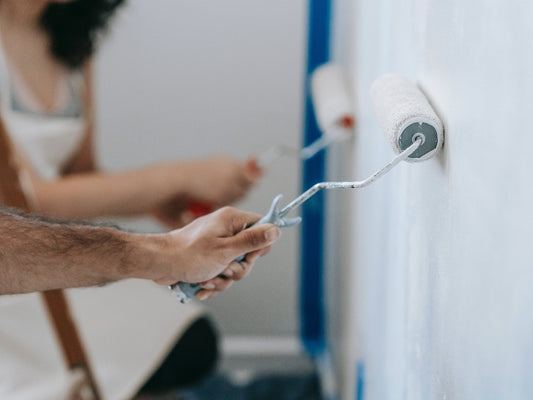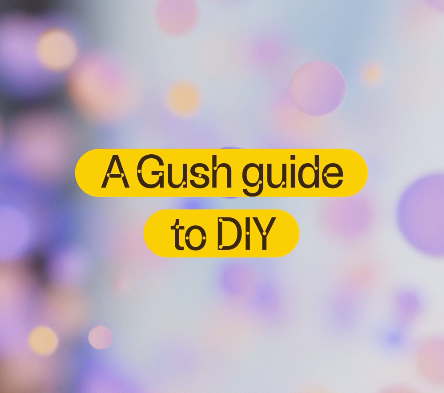Sustainability
Gush’s guide to indoor air quality

For the past 5 years, we’ve been singing from the rooftops about our air-purifying paints — swearing about the importance of Indoor Air Quality (IAQ).
As reported in the news last week¹, Grace Fu, the Minister for Sustainability and the Environment, revealed that the Singapore Government is seriously considering setting formaldehyde emission limits in building products and household furnishings.
That’s music to our ears. Our products have revolutionised the paint industry — with GreenGuard and GreenGuard Gold certifications to boot. Which means, they’re not just VOC-free, but they lower VOC levels in your space too. Including formaldehyde.
What’s IAQ anyway?

In short, it’s exactly what it sounds like — it’s the quality of air that we breathe indoors.
When we talk about cultivating healthy habits, the age old adage is to go outdoors, be in nature, and smell the roses. Or for the chronically online — to go outside and touch some grass.
There’s a scientific reason for that. Plants are nature’s air-purifier². When we’re indoors, we have the misconception that staying within walls protects us from pollutants. We forget that pollutants aren’t just from car or factory emissions — they’re everywhere. That is, they’re in your homes too. And without proper care, we’re breeding a vicious and dangerous cycle of poor indoor air quality³.
How’s your air?

We spend 90% of our time indoors⁴.
In our hot and tropical climate, occasional air-conditioning usage has become a necessity. With that said, when’s the last time you cleaned or replaced your filters?
When we’re indoors, we are directly exposed to man made items such as furniture and other knick-knacks. These items are often brimming with chemicals. In particular, Volatile Organic Compounds (VOCs)⁵. Formaldehyde — a colourless, acrid-smelling gas — is one of the most common VOCs. It commonly irritates the skin, eyes, nose and throat while high exposure may cause some types of cancers.
And it’s likely everywhere in your home.
A non-exhaustive list of VOCs.

Now what?
Do a quick google search, and you’ll get the same advice — change or clean your filters regularly. Make sure you ventilate your space, or invest in an air-purifier. Don’t stay in a freshly painted house as paints have high formaldehyde content.
While it wounds us that we’re not yet a household name that pops up on any of these lists, we’re spreading the word where we can.
Gush paints: a simple yet elegant solution.

Gush exists because we’ve been there and experienced difficulties relating to poor indoor air quality.
Air purifiers take up electricity, space, and only work within a specific radius.
Gush paints transform the largest surface area in your home — your walls and ceilings — into one that can also purify the air of VOCs. No electricity or additional light and space required.
Our paints are non-toxic and have zero VOCs. In fact, proprietary technology in our paint absorbs lingering VOCs in your air from other sources and releases them into harmless carbon dioxide and water. They’re also anti-bacterial and anti-moulding — keeping your spaces fresh, clean and bursting with personality in your favourite paint colours.
A future we can Gush about.

Gush was created to solve real human problems in the built environment sector, while being kind to the Earth we call home. All we want is to be well and thrive as a community for generations to come. We’re glad to hear that the Singapore Government will be exploring ways to regulate formaldehyde in products. With a government that cares, we’re one step closer to safer homes for all.
Learn more about VOCs
Learn more about the science behind Gush Interior Paints
Shop Gush Paints
Bibliography.
1. Qing A. Worried about pollutants from paint? Govt may regulate emissions for indoor products, furnishings. The Straits Times. Published January 4, 2023. Accessed January 6, 2023. https://www.straitstimes.com/singapore/environment/govt-to-consider-regulating-emissions-in-building-products-to-improve-indoor-air-quality
2. Han Y, Lee J, Haiping G, et al. Plant-based remediation of air pollution: A review. J Environ Manage. 2022;301(113860):113860. doi:10.1016/j.jenvman.2021.113860
3. Who.int. Accessed January 6, 2023. https://www.euro.who.int/__data/assets/pdf_file/0009/128169/e94535.pdf
4. Han GB, Jang JH, Choi C, Lee TJ. Effect of efficient supply of pure O2 concentrated by PSA-type O2 separator on improvement of indoor air quality. Korean J Chem Eng. 2016;33(4):1305-1310. doi:10.1007/s11814-015-0288-3
5. Sonne C, Xia C, Dadvand P, Targino AC, Lam SS. Indoor volatile and semi-volatile organic toxic compounds: Need for global action. J Build Eng. 2022;62(105344):105344. doi:10.1016/j.jobe.2022.105344







